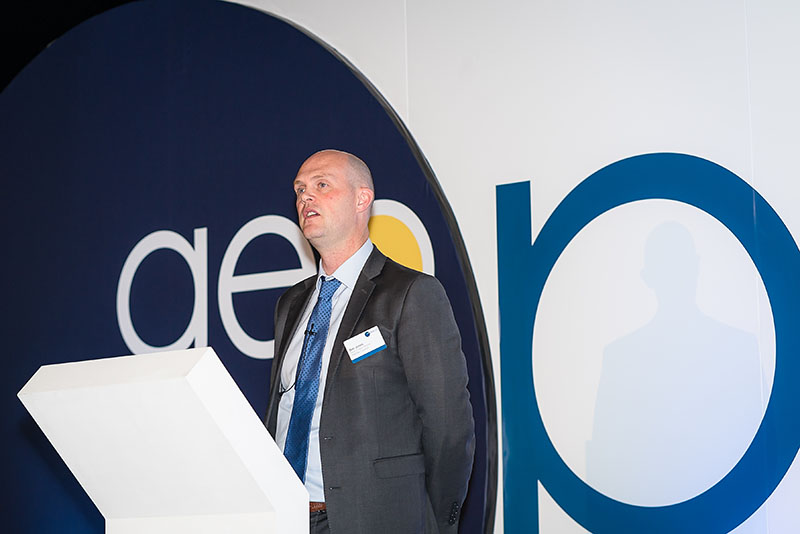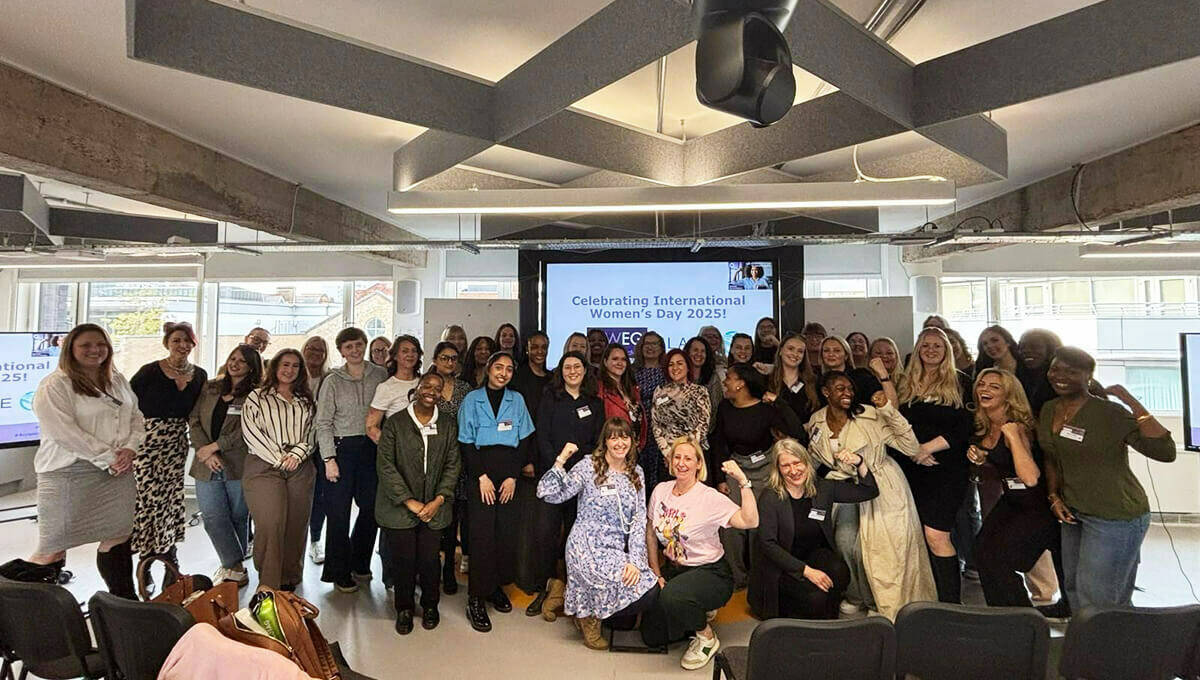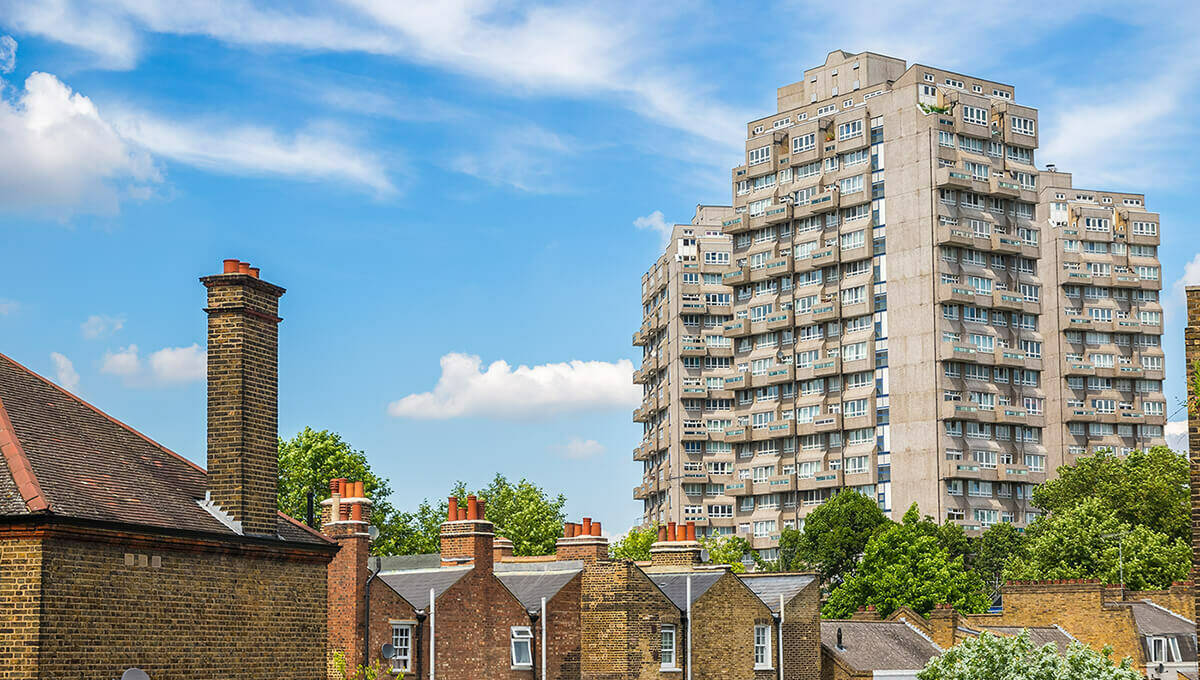To mark Gazetteers@GIS Day, following is a guest blog from Ben Jones, Head of Digital Services at Harrow Council on how the council’s LLPG is the Logical Glue that sticks all their systems and data together. This blog is based on Ben’s presentation at the GeoPlace annual conference 2017.
Last week when I started to prepare this presentation I had a look through the list of attendees and the other speakers here today and to be honest, I realised I probably know less than anyone else here about the technical side of the Local Land and Property Gazetteer (LLPG) - I thought, what could I add?

So, what I hope to do today is try and explain how I was converted to understand the importance of the LLPG and how it has been key to the successful digital transformation programme we have achieved at Harrow. This is where we started our transformation journey. That’s me up there on the left. I just saw the address as one of the many bits of information that customers gave us when they asked us to do something. I kind of saw the address look up as just an easier way of customers to not have to type in their address every time they filled in a form.
But thanks to our then excellent Local Land and Property Gazetteer (LLPG) custodian who is present here today, Luke Studden, explained to me that the LLPG has the potential to join up all the many different sets of data that we hold across the council and basically to be at the heart of how we digitalise many different services that we run at Harrow. And even better he came up with a snappy title for the LLPG - the ‘Logical Glue’ as he explained that this stuck all our systems and data together. With that, I was totally sold.
Before I get on to some of the examples of the work that we have done at Harrow, I thought I would give an overview of the results of our channel migration digitisation programme.
This is a sum of a variety of small and large programmes, some very successful and to be honest, some not so successful but by now the accumulation of our projects saves us £1.2m a year in our front office, mainly through channel migrating our customer services team, saves a further £1m in back office processes mainly through automating former manual processes and roughly about another £300,000 through print and other incidental savings. And the LLPG has pretty much played a part in every single one of the projects that we now operate.
So, where do you start? I am sure I am preaching to the converted here but the starting point for all of this is the consistent use of the LLPG and address across the organisation. At Harrow, we initially had some resistance from certain departments but using the carrot and plenty of stick, we won a lot of the battles. Now, if there is a system in Harrow that has got addresses in it, it uses the Local Land and Property Gazetteer (LLPG). This covers the traditional systems like council tax, environment systems, school admissions, right through to things like adult services, all the children’s’ services systems and even special needs transport.
Obviously, this isn’t just a one off task. It is essential to ensure that the resources are available to maintain and keep all these systems up-to-date and have a strong maintenance of the Local Land and Property Gazetteer (LLPG) centrally.
In Harrow, we took the decision to move the Local Land and Property Gazetteer (LLPG) and the resource that looks after digital and we have been very lucky to have excellent team members who are very passionate about this area working on it. To be honest, this may not be the most exciting, glamorous part of it but all future developments have relied on creating this solid foundation. So, in my eyes, on to the slightly more exciting stuff - I am going to run through some of the examples of things we have done at Harrow.
One of the most obvious areas for the use of Local Land and Property Gazetteer (LLPG) is environmental services because this really is a service that is based around location. It is also a service that creates a lot of demand from residents who just want to know what is going on for them. At Harrow when you visit our environmental web pages, the first thing we want from you is your address but more specifically your UPRN. Using that Unique Property Reference Number (UPRN), we then retrieve all the information we have about your bin collections from our waste system. After showing that hopefully we have collected your bins successfully with a big green tick, we will then give you an update on all the street cleaning information in your area, again called directly from our back-office systems based on your UPRN.
Finally, we then give you a map of the area you live in, where you can get an update on the fly tipping report, tree issues and just have an overview of what is happening in your local area.
So, based on your address and your Unique Property Reference Number (UPRN), we create a personalised page that based on our research, answers most of the questions that we receive from customers.
It is not just location based services that we use the Local Land and Property Gazetteer (LLPG) for. A major part of our channel migration success in Harrow has been based on the use of our authenticated channel, named pretty much as every council seems to do, “The My Harrow account”.
We have over 35,000 log-ins every month and we have over 90,000 residents registered and every in-borough registered account is linked to the Unique Property Reference Number (UPRN). We use this information as the golden thread that allows us to start tying up all our different records that we have about our customers to build up the services around the customer.
The use of the Local Land and Property Gazetteer (LLPG) helps us link our customers to the correct council tax account. They can see their balance and all their council tax details that we pull from our back office systems. We use it to link our residents to the school admissions data. Using this we have virtually shut our school admissions services in the contact centre and boosted channel migration and online take up through this.
We use it to link up our residents to their housing benefit service giving them all their housing benefits information via the online account. Using this we now have half of all our housing benefit claimants using our online services to transact with us.
Among other council things, we like to show residents their bin collection days. One thing again for working for a council, it always comes back to the bins! We also show people the details of their pay guard and waste subscription. Again, using the Local Land and Property Gazetteer (LLPG) and the address, we give people their local planning applications allowing them to look at further details and comment on the plans.
Using the Local Land and Property Gazetteer (LLPG), we have managed to create a personalised portal that pulls all this information around the customer rather than the customer having to go around to different services to gather it.
One of the key areas for generating savings both in the front and the back office has been the use of integrated web forms. The 60 most used transactions have all been converted into forms, integrated end to end and where possible we also want to make the back-office processing too.
We have 25,000 forms submitted per month and the majority use the UPRN as a key matching bit of data across all the systems. With such a wide variety of forms that to go through would take all day but the topics range from council tax to move in and move out. Again, the UPRN is key in linking all the data together, to reporting fly tipping, even down to school admissions applications. Again, it is all based around how the LLPG is ensuring that we tie together the correct data across all our systems.
This has been a very quick talk through some of the things we have done at Harrow. I hope I have given you some useful examples of the power of using the LLPG and the very least, I hope it has given you a catchy title for the “Logical Glue”.
In terms of building a business case for an investment in it, it is my conclusion that you could not build a successful transformation programme without building a strong foundation first and building a corporate approach to the Local Land and Property Gazetteer (LLPG) is at the heart of that. The message I would give to you all really to take back to the organisations you came from is that without creating a strong LLPG infrastructure and the resources to maintain it, which is also key, it will make every digital project that your council or your organisation works on so much harder to deliver each time you go to it.
Ben Jones, Head of Digital Service, Harrow Council
See the slides that accompany this presentation from Ben here.



